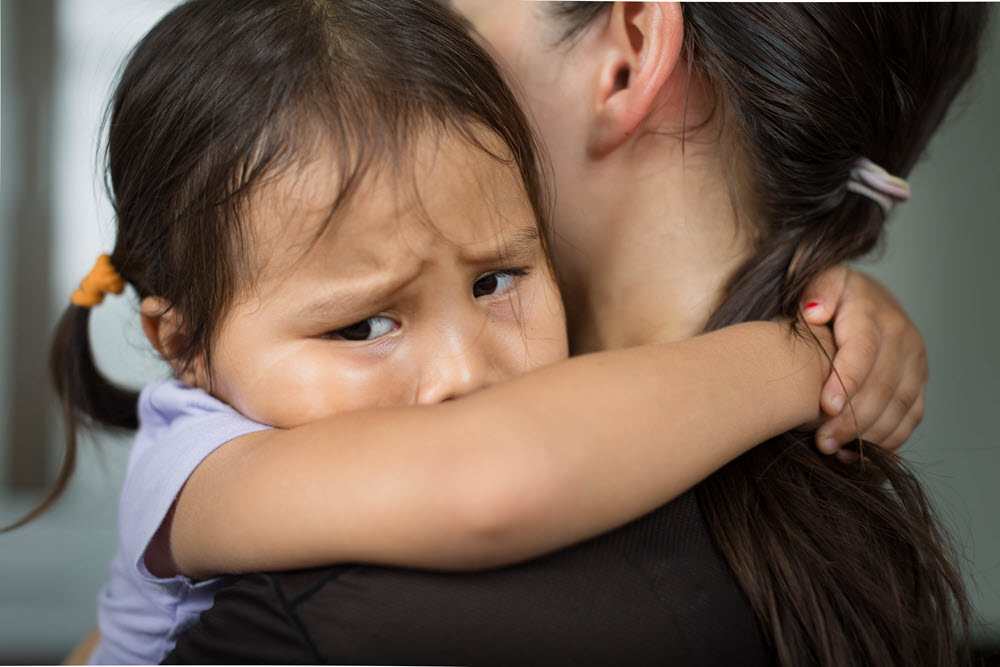Discovery Point Blog

Helping Your Child Through Separation Anxiety
Most children experience separation anxiety at some point, although the intensity of their behavior often varies quite a bit. Infants as young as 4 or 5 months of age can display signs of separation anxiety, and even young teens can have trouble parting with their parents during a major life transition.
If your child is entering preschool or you are going back to work and starting child care for the first time, you may be worried about the possibility of separation anxiety and wonder what you can do to make saying goodbye a little easier. There are a few things you can do to help your child cope with your exit and also give yourself confidence that they’ll be okay while you’re away.
Below are six strategies for easing the difficult symptoms of separation anxiety and getting into the swing of a new child care routine.
1. Talk with your child in a calm and reassuring manner.
While you may also be feeling a little anxious about the pending separation, it’s important to remember that your child can easily pick up on the fact that you feel stressed. Aim to use a positive and reassuring tone with them as you explain what will happen while you are away, all the fun things they will do in the meantime, and when exactly you will be back.
2. Don’t discount your child’s fear.
Children that are feeling the impact of separation anxiety are often in what we call the fight, flight, or freeze mindset. In this mode, they aren’t necessarily thinking logically. Hearing you acknowledge their fear can help them let go of their intense emotions and transition into a state of mind that is more open to reasoning. A bit of empathy toward a child who is feeling separation anxiety can go a long way in helping them calm down and understand that you are not leaving them forever.
3. Practice makes perfect.
If possible, consider separating from your child for shorter periods of time before jumping into longer child care sessions. By practicing leaving your child at home with a caregiver for an hour or two, you can help them get familiar with the feeling of saying goodbye and give them confidence that you will return.
4. Use a transitional object.
While we may sometimes find our childrens’ attachments to stuffed animals or blankets a little silly, these objects can actually play a huge role in easing separation anxiety. They are often known as transitional objects as they remind children of their parents and help them self-soothe. Before you leave, make sure your child’s favorite toy or soft object is nearby to comfort them.
5. Avoid doing a vanishing act.
You may feel like the fastest and easiest way to leave and skip the tears is to quickly disappear without saying goodbye to your child. In your mind, they won’t even notice you’ve left. However, this is typically far from the truth. Pulling a Houdni will ultimately confuse your child, amping up their stress and anxiety and making the next parting even more difficult due to the fear that you could disappear at any moment.
6. Create a goodbye routine.
Children thrive on consistency, and consistency can be key to dealing with separation anxiety in the long run. While it may seem difficult to form a routine when your child is sobbing and you are struggling to leave, making a habit of a short and sweet goodbye will eventually help build a familiar transition that becomes easier over time.
Seeing your child in distress can be incredibly difficult. On the other hand, you can’t be by their side 24/7, as much as you may want to be. Trying to manage separation anxiety at an early age and aiming to remain calm, empathetic, and consistent throughout this process can help you and your child get through upsetting moments and into a routine that allows you both to spread your wings.


